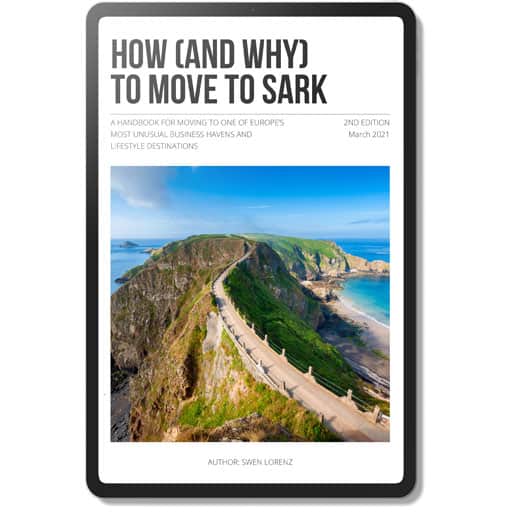Candid advice from proven experts is invaluable, but not easy to get. That’s why I love attending dinner talks where the focus is solely on everyone having an interesting discussion, instead of people pitching anything to each other. When it’s clear that nothing gets pitched, everyone is free to speak their mind.
Such was the case at a dinner featuring Leo Castellanos, a partner and investment director of SaatchInvest, an early-stage investment firm based in London.
Leo, ever the good sport, even talked about: “What do you need to know about venture capital that the venture capitalists are not going to tell you?”
If you are trying to raise funds for your early-stage venture or considering to set up your own business, here is some uncensored advice about what to look out for.
An early-stage funder for technology firms
Most anyone will know “Saatchi & Saatchi”, inarguably one of the world’s most recognised names in advertising. It’s less known that brothers Maurice and Charles Saatchi set up a new ad agency network in 1995, following their resignation from Saatchi & Saatchi. Their new firm, M&C Saatchi, is listed on the London Stock Exchange and has a market value of approximately $400m.
SaatchInvest is a subsidiary of M&C Saatchi. It was set up in 2012, as a fund that “loves to be the first money in.” Typically, the fund invests between £100k and £300k for a 10% stake. Notably, it does NOT require the investee companies to fit into M&C Saatchi. The investments are judged on their own merits, but they have to be in the technology sector.
SaatchInvest was set up in 2012, as a fund that “loves to be the first money in.”
As we’ll see later, SaatchInvest being part of M&C Saatchi does offer a variety of distinct advantages.
Meet Leo Castellanos
Within its small team, Leo is one of the key members.
Originally from Caracas, Venezuela, he initially spent nine years consulting at PricewaterhouseCoopers. As he puts it, this gave him a methodical frame of mind.
After getting an executive MBA, Leo launched an incubator fund for City University in London, which he ended up running for five years. During this time, he oversaw 60 projects from idea generation to fundraising and all the way to proof of market.
After that, Leo started his own business. Modelled on the success that MoneySupermarket.com had in the UK, he set up an online business comparing financial products in Latin America.
During the last five years, he has been an investment director and partner at SaatchInvest, where he has been involved with around 20 investments so far (i.e., every single one that SaatchInvest has done up to this point). My dinner with him was already a few months ago, so the number of investee companies has likely increased slightly since then.
The kind of company Leo and his team like to invest into is easy to describe: “HUGE ideas that solve simple problems.”
How SaatchInvest judges potential investments
Every early-stage funder has their own area of expertise and their own approach. That’s why the advice that came out of this particular dinner might be useful for some, but not useful for others.
Have a product or a product prototype that they can look at. Notably, this is something that SaatchInvest deems more valuable than a pitch deck!
Leo’s advice and requirements, as described during his dinner talk, was strongly geared towards having a product, or a product prototype, that is more than an idea.
After all: “Who hasn’t got 20 ideas?”
SaatchInvest gets an incredibly large number of pitches from founders. As the company itself puts it, it will turn down over 99% of them. The company’s website does provide a public email address to which anyone can send a pitch. However, it also states very clearly that unless you come to them through a personal introduction, they may not even look at your proposal.
How to increase your chance of SaatchInvest being interested in your pitch?
- Have a product or a product prototype that they can look at. Notably, this is something that SaatchInvest deems more valuable than a pitch deck!
- Be very clear what existing problem this product is going to solve, i.e., validate why this product is going to be sought-after in the marketplace. Provide early evidence on how good the product is.
- Show traction, i.e., how many sales have you already achieved or what other evidence is there that this product can find paying customers soon? Traction is about showing that once the product has been built, there are people who really want it and who are willing to pay good money for it.
- What will the unit economies be once the business is running at full speed? Put another way, how much will it cost to acquire a customer and how much will the company make out of each customer?
- Why is this company going to be MASSIVE? Demonstrate the market size.
Are these points tall orders to ask for?
Keep in mind how Leo described what drives him and his colleagues: “The promise of riches and the fascination of innovation is everything we do.”
What it means to be an entrepreneur
Business plans, pitch decks and Excel sheets are great. But at the end of the day, no one has perfect foresight what the future will bring. Only by having the right people on board will you be able to take your enterprise to success.
Those companies that succeed will have changed their business model COMPLETELY along the way.
Or as Leo put it: “When I get a pitch, what do I look for? The team, it always comes down to the team.”
“It takes 58 product prototypes to get one functioning product.”
“Those companies that succeed will have changed their business model COMPLETELY along the way.”
“3 out of 4 companies will change completely.”
The company has to be “run by people who can execute, and who can also learn when mistakes are made.”
Advice for your fundraising strategy
Leo also spoke about what is a good strategy to go to the market and fundraise.
“Everyone has a story to tell, and it’s the founder’s job to tell the story. We have found this problem, and we are going to make money this way.”
“We are on a mission, and we are a team you can build on. … The next X months, we are going to reach these milestones.”
“If you invest X, you will make a return of Y.”
“9 out of 10 early-stage companies will fail.” Out of this eternal truth, you can understand the logic why seed funders require a prospective investment to promise a return of at least ten times their money. If it were any less, a portfolio built on the premise of losing 90% of its investments wouldn’t work.
What to expect from an early-stage funder?
“Cash is the first thing, which sounds very simple.”
However, no seed funder would be the right funder for a venture if it wouldn’t also contribute non-financial aspects to the success of the company.
“SaatchInvest can open doors with suppliers and potential customers so that you can grow 10 or 20 times.”
Seed funders also have to have the expertise and the stamina “to take you to a position where you can exit.”
In the specific case of SaatchInvest, soft contributions also include “access to board members (of M&C Saatchi), who are legends in advertising and who can open doors to lead brands.”
Given Leo’s experience, their support also includes the “expertise we bring in running a business.”
What you don’t usually get to hear
As the saying goes, banks only lend you money when you don’t need it.
The same is true, in some ways at least, for raising venture capital.
“If you need to raise money, raise it when you don’t need it.”
Whereas this must sound like an impossible task to most readers, it holds true based on my own experience and ultimately goes back to how human nature works.
If you come across as desperate, no one will want to invest in you. Investors want to back safe bets and strong leaders.
If you need to raise money, raise it when you don’t need it.
For your fundraising pitch, always phrase matters based around notions that are similar to the following:
- Your venture is already fully funded for Plan A, but it could pursue an even better Plan B if it had more money. In other words, the company has been de-risked already and it won’t go bust, but everyone would be better off if investors came in to help it grow even faster.
- Your venture is securely funded for the next 12 or 18 months, but you are currently looking around who might be the best funder when the time has come to seek more funds. Great venture capital funders compete with each other for good deals, and this approach should lead to them asking you if they may invest now or at least start an ongoing relationship and dialogue with you.
- Your venture already has an offer from someone else, but they only offer money and not a widely known, reputable name, so you are looking for someone who has both money and a great name. Flattery gets you everywhere!
To stick to the old piece of wisdom about bankers and lending, go shopping for that umbrella when the sun shines.
A book recommendation
Leo’s no. 1 recommendation for useful reading material is: “Founder’s Dilemma: Anticipating and Avoiding the Pitfalls that can sink a Startup,” by Noam Wassermann.
I actually just bought a copy of it myself.
Yet more reading material
One of Leo’s colleagues, Alex Dunsdon, also has a blog. He published two articles that should be particularly useful for you:
“What does SaatchInvest invest in?”
“The SaatchInvest Manual: Who we are and what to expect?”
A quick note about the source material for this particular article: If you live in London or visit frequently, you might want to check out the service provided by TableCrowd. TableCrowd hosts dinners where a speaker is invited to elaborate about their experiences relating to fundraising, building a company, selling a company, etc. I am not affiliated with them, pay for my own dinner participation, and don’t get any commission for recommending them. But they do get my deep-from-the-heart recommendation for providing an insightful and quite affordable service to the London start-up scene. I get to meet people that otherwise, I would not have come across (including fellow diners), without having to pay a ridiculous joining fee or the kind of outrageous prices that some conferences attempt to charge. There are a whole number of articles on my website that trace back to attending one of their events. Leo sharing his insights with that audience was very generous!
If you enjoyed this, you might also find the following articles useful:
Want to print this article? Open a printer friendly version.
Did you find this article useful and enjoyable? If you want to read my next articles right when they come out, please sign up to my email list.
Share this post:


